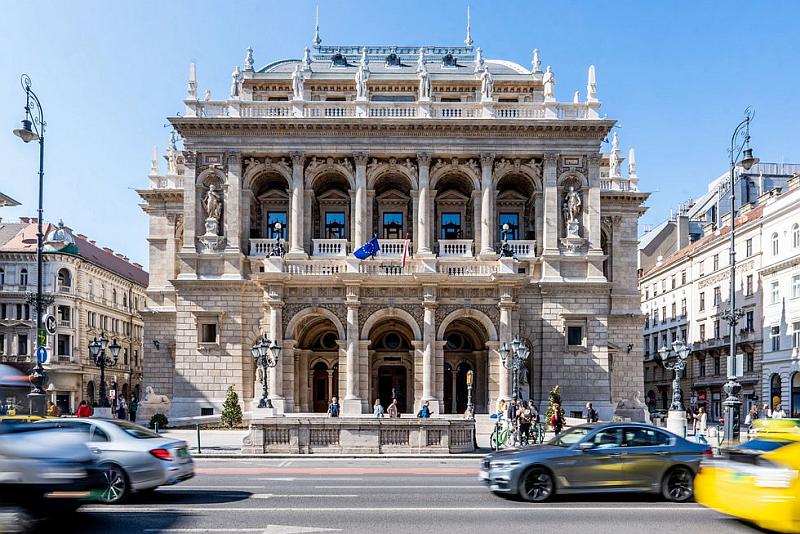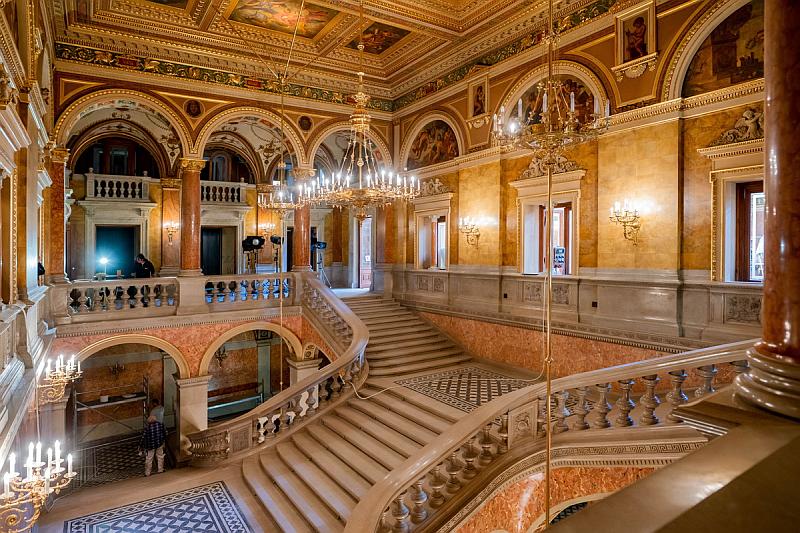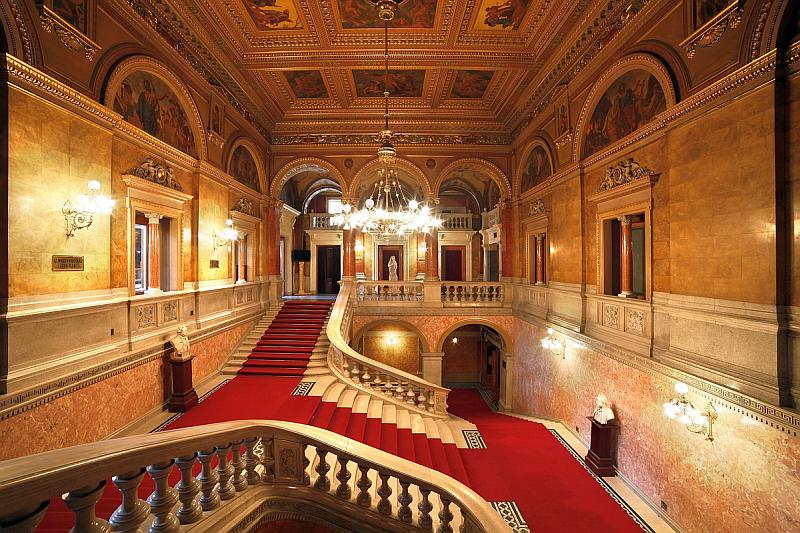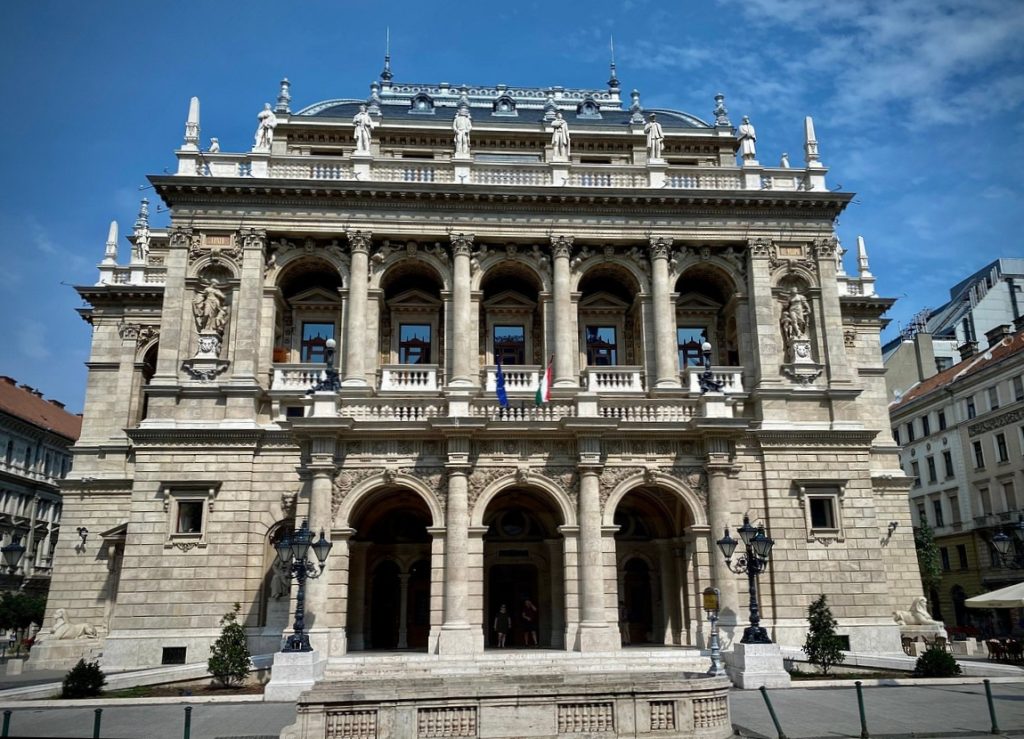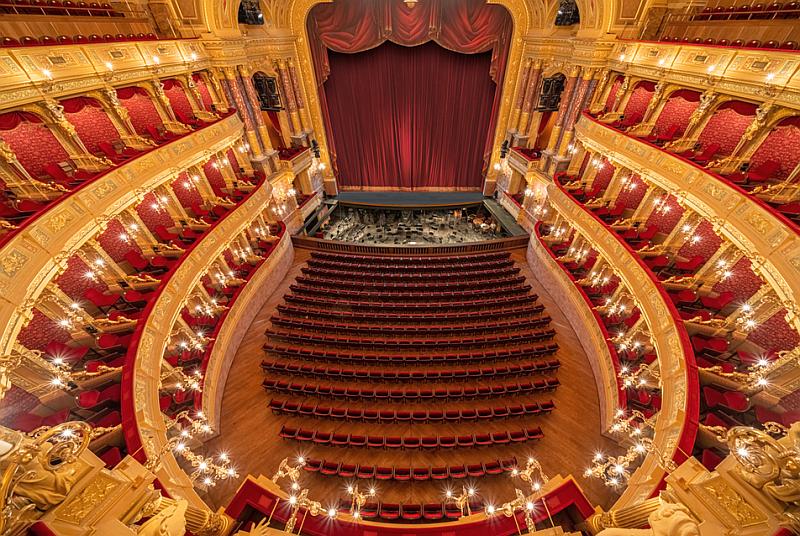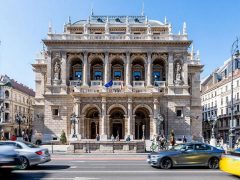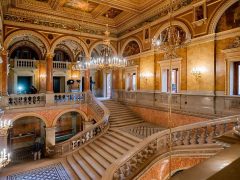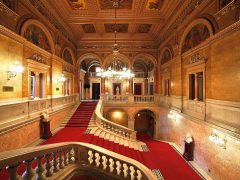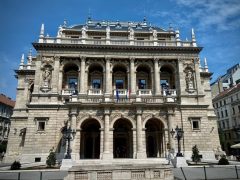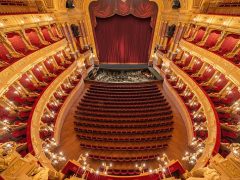Hungarian State Opera House: A Masterpiece of Neo-Renaissance Design
The Pride of Budapest
Nestled on the picturesque Andrássy Avenue, the Hungarian State Opera House is one of Budapest’s treasured landmarks. As you walk past, its neo-Renaissance facade, designed by Miklós Ybl, immediately captures your eye, taking you back to an era of opulence and sophistication.
A Historical Affair
Inauguration and Early Glory
Inaugurated in 1884 by King Franz Joseph I of Hungary, the Opera House witnessed grand performances conducted by the legendary Ferenc Erkel, also considered the father of Hungarian grand opera. Reflecting the grandeur of the Paris Opera, Ybl’s design imbues the building with elegance and monumental charm, symbolizing Hungary’s cultural renaissance during the Austro-Hungarian Empire.
Artistic Flair in Stone
Intricate Facade Details
Upon closer inspection, the main facade adorned in limestone boasts intricate carvings, highlighted by Alajos Stróbl’s mesmerizing marble sphinxes. Sculptures of iconic figures like Ferenc Erkel and Ferenc Liszt add to its allure, honoring Hungary’s rich musical heritage.
Musical Muses and Composers
The Opera House’s exterior pays tribute to music’s illustrious history. Muses and composers, ranging from Mozart to Tchaikovsky, grace the building’s facade, reflecting the universality of music and its timeless appeal. Statues of these musical giants inspire awe and admiration, creating a reverence for the art form that transcends generations.
An Interior of Marvel
Lavish Foyer and Grand Staircase
The lavish foyer showcases multicolored marble pavements and a gilded dome vault. This and the grand main staircase form a breathtaking introduction to the auditorium, the heart of the Opera House. The use of luxurious materials and intricate designs throughout the foyer sets the stage for the coming luxury.
The Auditorium
The horseshoe-shaped auditorium, which seats 1,300 people, features opulent red and gold decor that creates a captivating ambiance. The design ensures excellent acoustics and visibility, making it a world-class venue for opera and ballet performances. The plush seating and rich color scheme enhance the overall experience, enveloping the audience in a warm and elegant embrace.
Art on the Ceiling
Charles Lotz’s dome mural, ‘Apotheosis of Music’, is a mesmerizing piece that engulfs viewers with its Baroque movement, even as it harmoniously blends with the Renaissance aesthetics of the auditorium. The ornate chandelier, meticulously designed by Ybl himself, illuminates this masterpiece, adding to the grandeur and splendor of the space.
A Living Testimony to Art and Music
An Experience Beyond Architecture
The Hungarian State Opera House isn’t just a building; it’s an experience. It brings together art, history, architecture, and music in an embrace that resonates with the past and the present. Every corner speaks of legends; every note echoes with history. The Opera House is a living museum, continually adding new chapters to its storied history through performances and events that keep the spirit of its founders alive.
Cultural Significance
The Opera House stands as a testament to Hungary’s rich cultural tapestry. It is a place where the nation’s artistic heritage is celebrated and preserved, offering visitors an unforgettable journey through the annals of Hungarian music and performing arts. The building symbolizes national pride, embodying the artistic achievements and aspirations of the Hungarian people.
Practical Information for Visitors
Location and Accessibility
Situated on Andrássy Avenue, the Opera House is easily accessible by public transport, including metro, tram, and bus lines. Its central location makes it a convenient stop for tourists exploring Budapest’s many attractions.
Tours and Performances
Guided tours are available for those interested in learning more about the opera house’s history, architecture, and artistic significance. These tours offer behind-the-scenes glimpses into areas usually off-limits to the public. Additionally, the Opera House hosts a variety of performances, from classical operas to contemporary ballets, providing a rich program for visitors to enjoy.
Visitor Tips
- Booking: Performances often sell out quickly, so it is advisable to book tickets in advance.
- Dress Code: While there is no strict dress code, attending a performance is a special occasion, and many patrons choose to dress elegantly.
- Photography: Check the rules regarding photography, as restrictions may apply during performances and in certain areas.
Conclusion
The Hungarian State Opera House is a masterpiece of neo-Renaissance design that proudly symbolizes Budapest’s rich cultural heritage. It offers an unparalleled experience, merging history’s grandeur with the performing arts’ beauty. Whether you’re an architecture enthusiast, a history buff, or a lover of music, a visit to the Opera House promises an unforgettable journey into the heart of Hungary’s artistic legacy.
